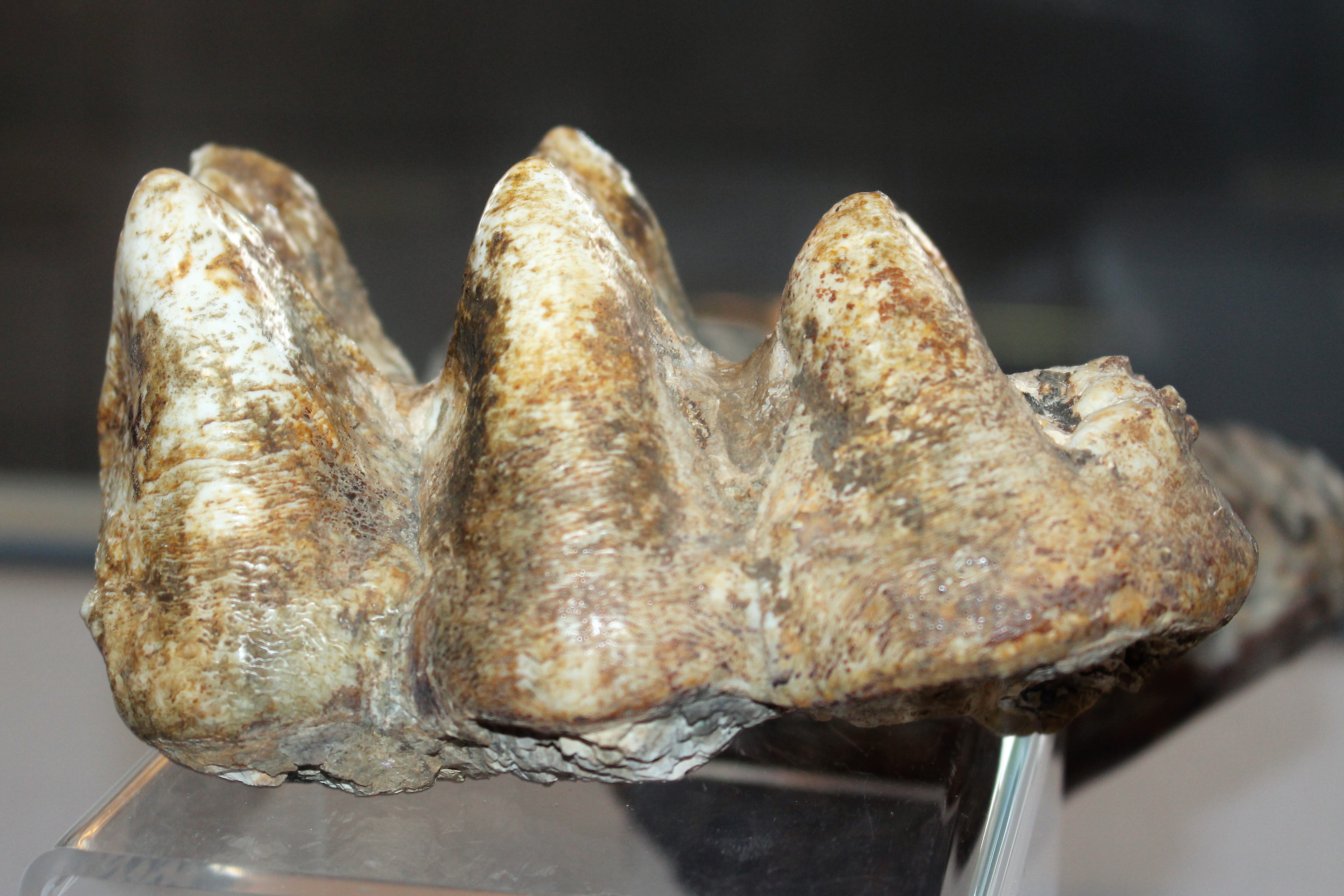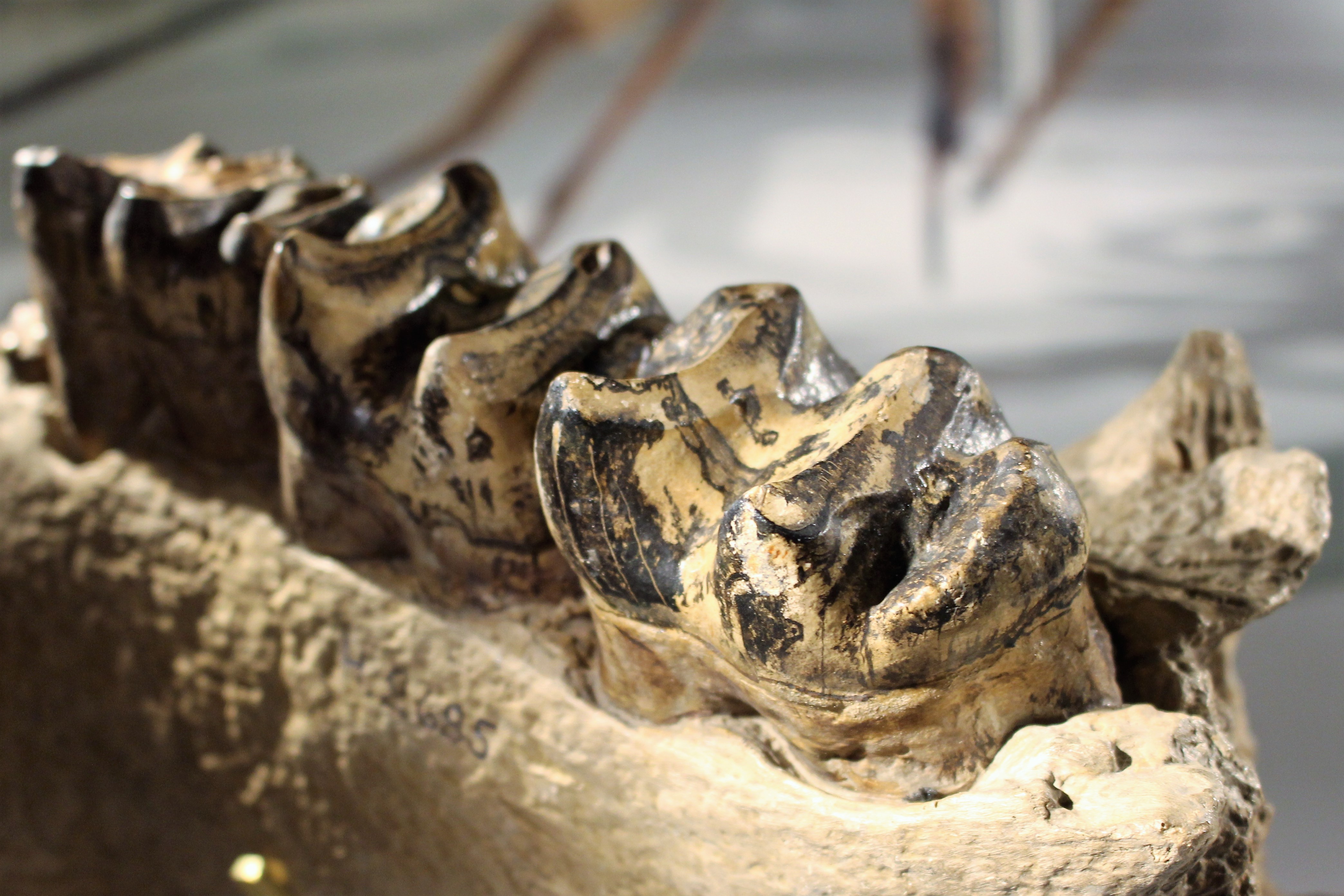|
Moeritherium
''Moeritherium'' ("the beast from Lake Moeris") is an extinct genus of basal proboscideans from the Eocene of North and West Africa. The first specimen was discovered in strata from the Fayum fossil deposits of Egypt. It was named in 1901 by Charles William Andrews, who suggested that it was an early proboscidean, perhaps ancestral to mastodons, although subsequent workers considered it everything from a relative of manatees to a close relative of both clades' common ancestor. Currently, ''Moeritherium'' is seen as a proboscidean that, while fairly basal, predates the split between elephantiforms and deinotheres. Seven species have been named, though only three (''M. lyonsi'', ''M. gracile'', and ''M. chehbeurameuri''), are currently considered valid. ''Moeritherium'' is unusual even among basal proboscidean standards. Like many later members of the group, it had two sets of tusks: the ones on the upper jaw pointed downwards, while those of the mandible (lower jaw) were fla ... [...More Info...] [...Related Items...] OR: [Wikipedia] [Google] [Baidu] |
Proboscidea
Proboscidea (; , ) is a taxonomic order of afrotherian mammals containing one living family (Elephantidae) and several extinct families. First described by J. Illiger in 1811, it encompasses the elephants and their close relatives. Three living species of elephant are currently recognised: the African bush elephant, the African forest elephant, and the Asian elephant. Extinct members of Proboscidea include the deinotheres, mastodons, gomphotheres and stegodonts. The family Elephantidae also contains several extinct groups, including mammoths and '' Palaeoloxodon''. Proboscideans include some of the largest known land mammals, with the elephant '' Palaeoloxodon namadicus'' and mastodon ''"Mammut" borsoni'' suggested to have body masses surpassing , rivalling or exceeding paraceratheres (the otherwise largest known land mammals) in size. The largest extant proboscidean is the African bush elephant, with a world record of size of at the shoulder and . In addition to thei ... [...More Info...] [...Related Items...] OR: [Wikipedia] [Google] [Baidu] |
Fayyum (fossil Deposit)
The Fayum is a region and an important fossil ''Lagerstätte'' in northern Egypt. The region comprises the Faiyum Oasis, Fayum Basin, which is intensively used for agriculture, and adjoining areas; the important areas of discovery are mostly north and west of Lake Moeris, Lake Qarun. The Wadi al Hitan, Wadi al-Hitan, known for its numerous whales, whale fossils and since 2005 World Heritage Site, UNESCO World Natural Heritage Site, forms the south-western end. The deposits of the Fayum belong to various geological formations. They are mainly composed of limestone, siltstone and sandstone. The lower sections consist of marine sediments, while the upper, continental sediments were formed in a coastal landscape. The formation period ranges from the Middle to the Upper Eocene to the Rupelian, Lower Oligocene, which corresponds to an age of around 41 to 28 million years ago. The entire sedimentary complex is overlain by basalt, which dates back to volcanism, volcanic activity around 24 m ... [...More Info...] [...Related Items...] OR: [Wikipedia] [Google] [Baidu] |
Jebel Qatrani Formation
The Jebel Qatrani Formation (also Gebel Qatrani, Gabal Qatrani or Djebel Qatrani) is a geologic formation located in the Faiyum Governorate of central Egypt. It is exposed between the Jebel Qatrani escarpment and the Qasr el Sagha escarpment, north of Birket Qarun lake near Faiyum. The formation conformably overlies the Qasr el Sagha Formation and is topped by the Widan el Faras Basalt. The age of the formation has been subject to debate, but the most recent research indicates that it covers both the latest parts of the Eocene and the Early Oligocene, spanning over the boundary between these two time periods. The geology and fauna of this formation gives a good idea of the environment and animals present during this time period. Research suggests that the Jebel Qatrani Formation featured a mix of subtropical to tropical forest, lowland swamps and marshes, ponds and rivers that would empty northward into the Tethys Sea. This is supported by the presence of water-dependent fauna inc ... [...More Info...] [...Related Items...] OR: [Wikipedia] [Google] [Baidu] |
Mastodon
A mastodon, from Ancient Greek μαστός (''mastós''), meaning "breast", and ὀδούς (''odoús'') "tooth", is a member of the genus ''Mammut'' (German for 'mammoth'), which was endemic to North America and lived from the late Miocene to the early Holocene. Mastodons belong to the order Proboscidea, the same order as elephants and mammoths (which belong to the family Elephantidae). ''Mammut'' is the type genus of the extinct family Mammutidae, which diverged from the ancestors of modern elephants at least 27–25 million years ago, during the Oligocene. Like other members of Mammutidae, the molar (tooth), molar teeth of mastodons have zygodont morphology (where parallel pairs of cusp (anatomy), cusps are merged into sharp ridges), which strongly differ from those of elephantids. In comparison to its likely ancestor ''Zygolophodon'', ''Mammut'' is characterized by particularly long and upward curving upper tusks, reduced or absent tusks on the lower jaw, as well a ... [...More Info...] [...Related Items...] OR: [Wikipedia] [Google] [Baidu] |
Qasr El Sagha Formation
The Qasr el Sagha Formation is a formation (geology), geological formation located in Egypt. The formation is part of the Wadi El Hitan World Heritage Site. The Qasr el Sagha Formation overlies the Birket Qarun Formation and is overlain by the Gebel Qatrani Formation. The sandstones and shales of the formation were deposited in a river delta, deltaic to shallow marine depositional environment, environment.Gingerich et al., 2019 It dates to the Late Eocene (middle Priabonian, ). Paleontological significance Fossils of the Archaeoceti, early whale genus ''Saghacetus'' ("Sagha whale", originally named "''Zeuglodon osiris''") were first collected at Qasr al Sagha by German explorer Georg August Schweinfurth in January 1886 (a well-preserved dentary).''Saghacetus'' is common in the middle of Qasr el Sagha, but there are few other specimens of archaeocetes whales; the only exception being the enigmatic "''Prozeuglodon stromeri''", named in 1828 based on specimens from 1904, but never ... [...More Info...] [...Related Items...] OR: [Wikipedia] [Google] [Baidu] |
Elephant
Elephants are the largest living land animals. Three living species are currently recognised: the African bush elephant ('' Loxodonta africana''), the African forest elephant (''L. cyclotis''), and the Asian elephant ('' Elephas maximus''). They are the only surviving members of the family Elephantidae and the order Proboscidea; extinct relatives include mammoths and mastodons. Distinctive features of elephants include a long proboscis called a trunk, tusks, large ear flaps, pillar-like legs, and tough but sensitive grey skin. The trunk is prehensile, bringing food and water to the mouth and grasping objects. Tusks, which are derived from the incisor teeth, serve both as weapons and as tools for moving objects and digging. The large ear flaps assist in maintaining a constant body temperature as well as in communication. African elephants have larger ears and concave backs, whereas Asian elephants have smaller ears and convex or level backs. Elephants are scatter ... [...More Info...] [...Related Items...] OR: [Wikipedia] [Google] [Baidu] |
Eocene
The Eocene ( ) is a geological epoch (geology), epoch that lasted from about 56 to 33.9 million years ago (Ma). It is the second epoch of the Paleogene Period (geology), Period in the modern Cenozoic Era (geology), Era. The name ''Eocene'' comes from the Ancient Greek (''Ēṓs'', 'Eos, Dawn') and (''kainós'', "new") and refers to the "dawn" of modern ('new') fauna that appeared during the epoch.See: *Letter from William Whewell to Charles Lyell dated 31 January 1831 in: * From p. 55: "The period next antecedent we shall call Eocene, from ήως, aurora, and χαινος, recens, because the extremely small proportion of living species contained in these strata, indicates what may be considered the first commencement, or ''dawn'', of the existing state of the animate creation." The Eocene spans the time from the end of the Paleocene Epoch to the beginning of the Oligocene Epoch. The start of the Eocene is marked by a brief period in which the concentration of the carbon isoto ... [...More Info...] [...Related Items...] OR: [Wikipedia] [Google] [Baidu] |
Lake Moeris
Lake Moeris (, genitive Μοίριδος) was an ancient endorheic freshwater lake located in the Faiyum Oasis, southwest of Cairo, Egypt, which persists today at a fraction of its former size as the hypersaline Lake Qarun (Arabic: بركة قارون). In prehistory it was fed intermittently by the Nile via the ancient Hawara Channel, fluctuating in level throughout the Paleolithic and Neolithic periods. The prehistoric Lake Moeris spanned much of the area of the modern Faiyum Oasis, with a total area estimated at between and . During the Middle Kingdom, excavation of the Hawara Channel to create the canal now known as the Bahr Yussef increased the volume of inflow into Lake Moeris, and concurrent drainage and land reclamation projects would see the lake exploited for agricultural purposes. Further drainage and reclamation during the early Ptolemaic Kingdom effectively severed Lake Moeris' direct connection to the Nile and began a gradual trend of recession that continued th ... [...More Info...] [...Related Items...] OR: [Wikipedia] [Google] [Baidu] |
Deinotheriidae
Deinotheriidae ("terrible beasts") is a family of prehistoric elephant-like proboscideans that lived during the Cenozoic era, first appearing in Africa during the Oligocene then spreading across Europe and the lower latitudes of Asia during the Miocene epoch. Their most distinctive features were their lack of upper tusks and downward-curving tusks on the lower jaw. Deinotheres were not very diverse; the only three known genera are '' Chilgatherium'', ''Prodeinotherium'', and ''Deinotherium''. These form an evolutionary succession, with each new genus replacing the preceding one. Deinotheres were relatively conservative and showed little morphological change over their evolution, aside from a progressive increase in body size. Some species of ''Deinotherium'' are among the largest known land mammals ever, considerably exceeding modern elephants in size. The last members of ''Deinotherium'' persisted until the end of the Early Pleistocene in Africa, around 1 million years ago. De ... [...More Info...] [...Related Items...] OR: [Wikipedia] [Google] [Baidu] |
Gracility
Gracility is slenderness, the condition of being gracile, which means slender. It derives from the Latin adjective ''gracilis'' (Masculine (grammar), masculine or Feminine (grammar), feminine), or ''gracile'' (Grammatical gender, neuter), which in either form means slender, and when transferred for example to discourse takes the sense of "without ornament", "simple" or various similar connotations. In ''Glossary of Botanic Terms'', B. D. Jackson speaks dismissively of an entry in earlier dictionary of A. A. Crozier as follows: "Gracilis (Lat.), slender. Crozier has the needless word 'gracile'". However, his objection would be hard to sustain in current usage; apart from the fact that ''gracile'' is a natural and convenient term, it is hardly a neologism. The ''Shorter Oxford English Dictionary'' gives the source date for that usage as 1623 and indicates the word is misused (through association with ''grace'') for "gracefully slender". This misuse is unfortunate at least, because ... [...More Info...] [...Related Items...] OR: [Wikipedia] [Google] [Baidu] |
Charles William Andrews
Charles William Andrews (30 October 1866 – 25 May 1924) F.R.S., was a British palaeontologist whose career as a vertebrate paleontologist, both as a curator and in the field, was spent in the services of the British Museum, Department of Geology. Biography Andrews was born in Hampstead, Middlesex . A graduate of the University of London, Andrews was awarded an assistant's position at the British Museum, after a competitive exam, in 1892. His first concerns were with fossil birds, and he described '' Aepyornis titan'', the extinct "Elephant Bird" of Madagascar (1894). He noticed the connections among widely separated flightless rails of Mauritius, the Chatham Islands and New Zealand and deduced that their flightless character had been independently evolved on the spot. Alfred Nicholson Leeds' gifts to the British Museum of Jurassic marine reptiles from the Oxford Clay of Peterborough elicited his interest in plesiosaurs and other sea-reptiles which culminated in a catal ... [...More Info...] [...Related Items...] OR: [Wikipedia] [Google] [Baidu] |







